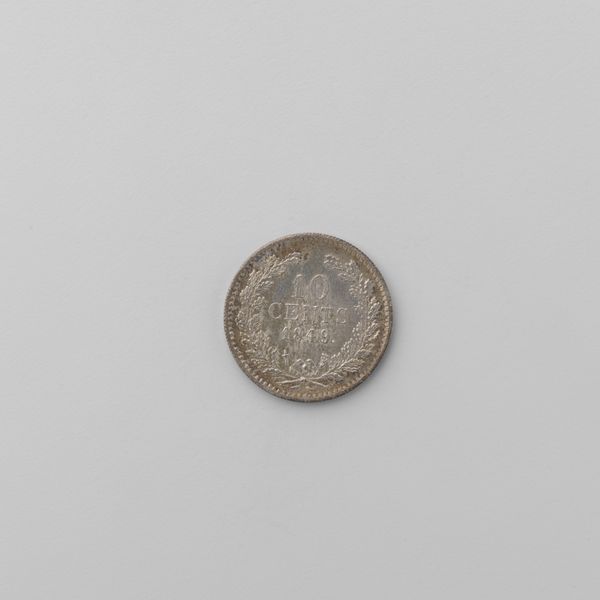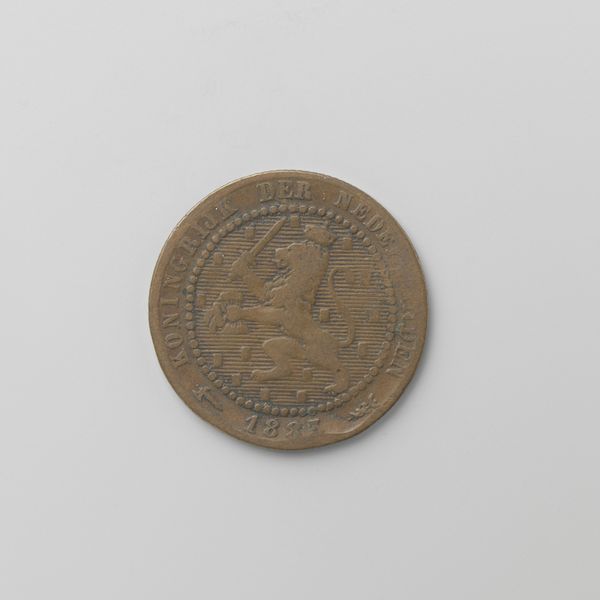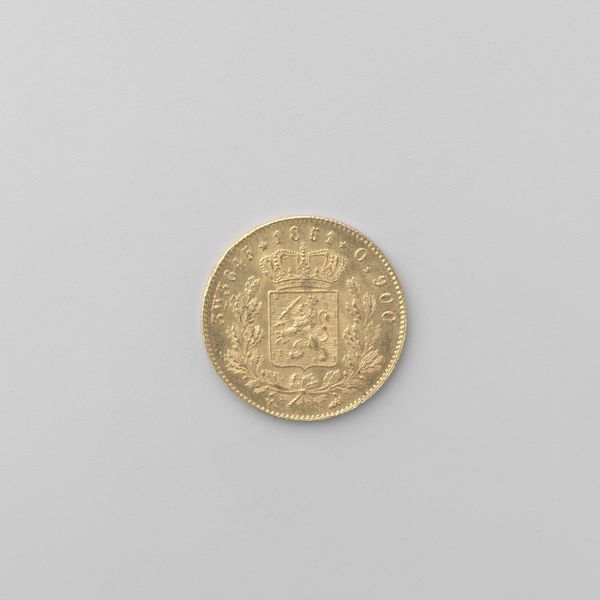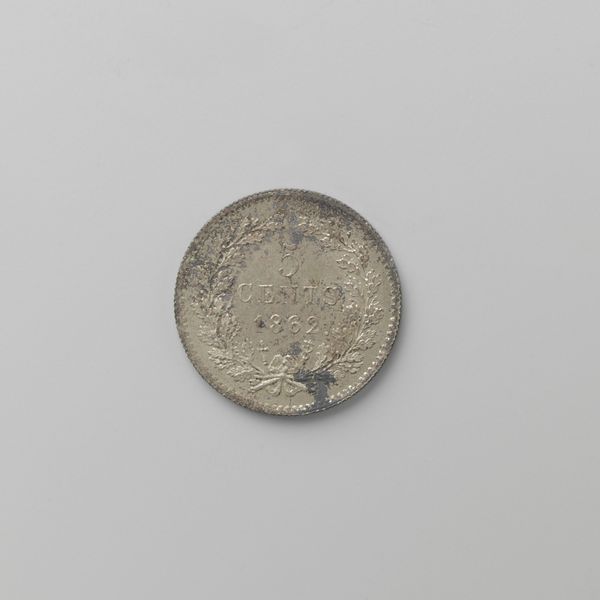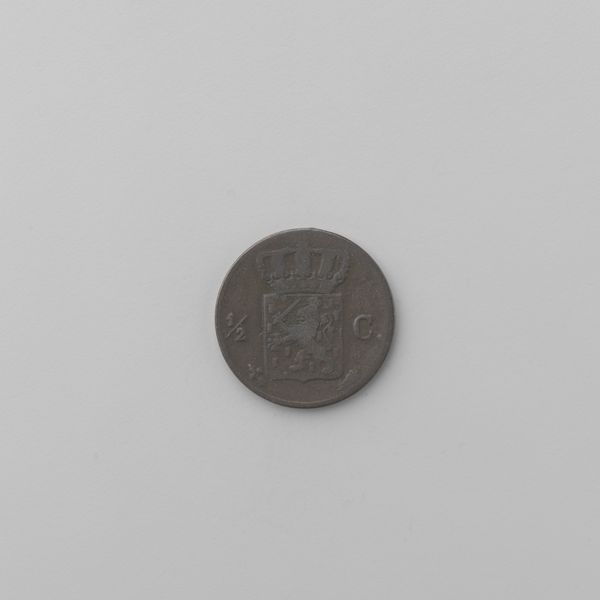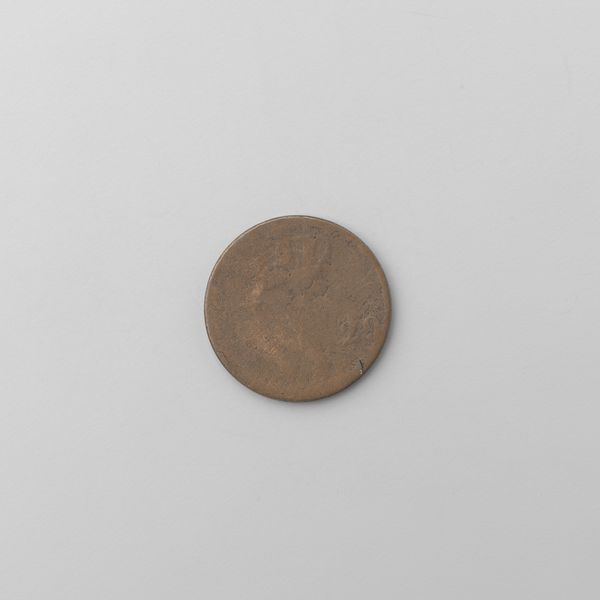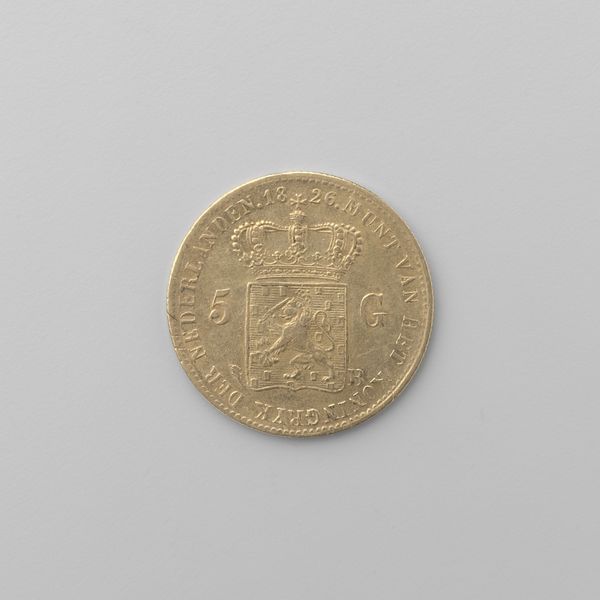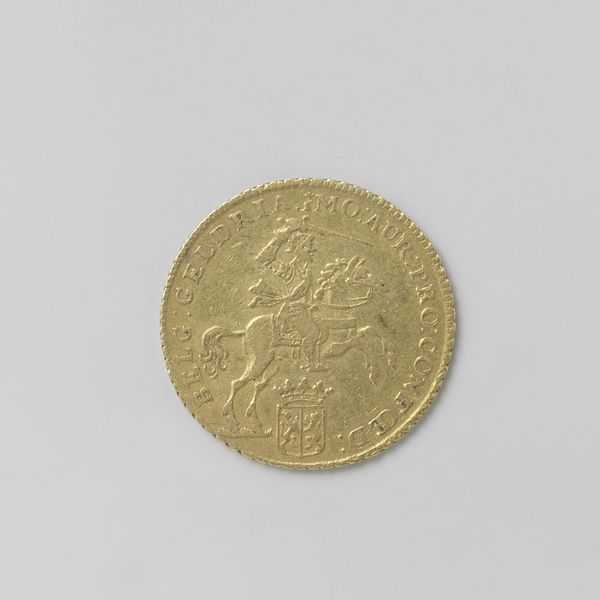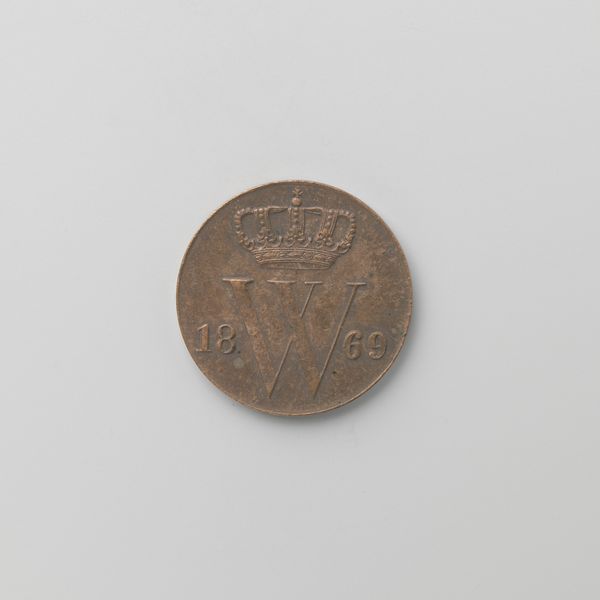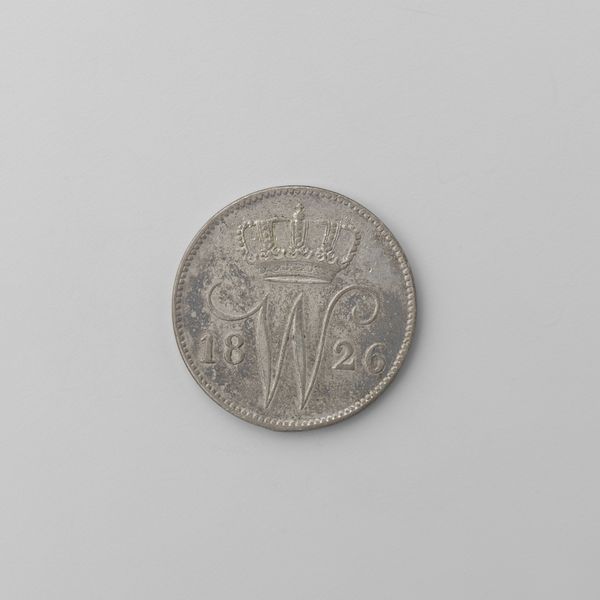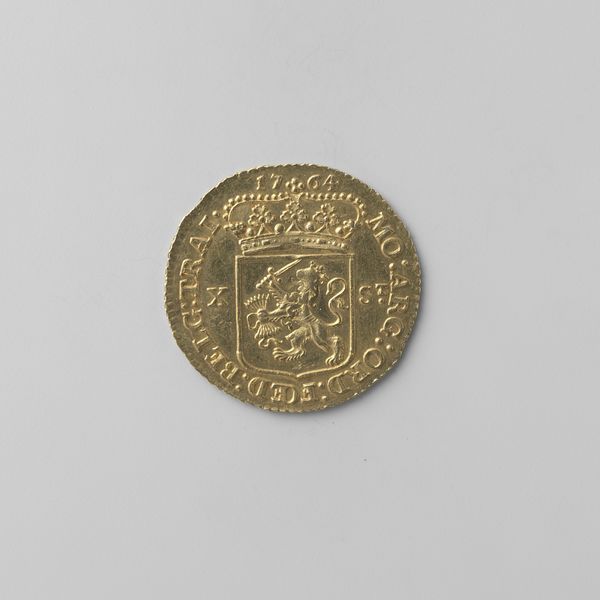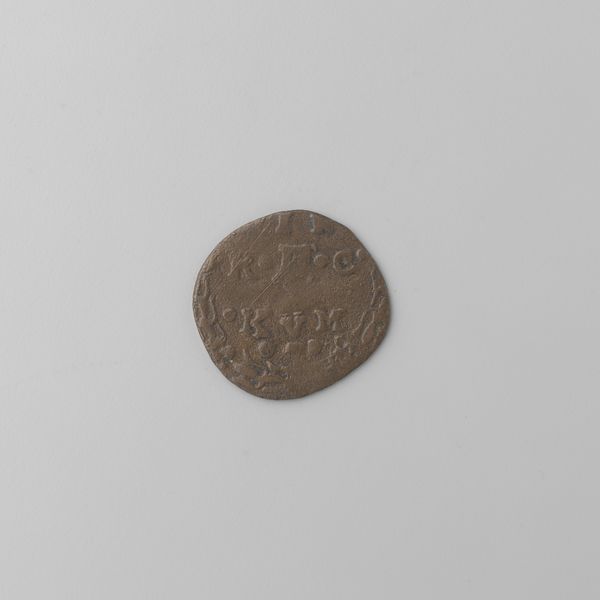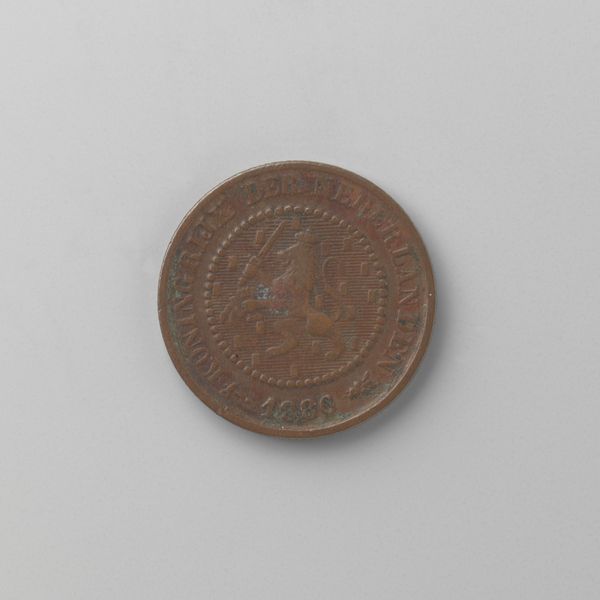
print, metal, photography
#
portrait
# print
#
metal
#
photography
#
history-painting
#
realism
Dimensions: diameter 1.4 cm, weight 1.25 gr
Copyright: Rijks Museum: Open Domain
Curator: Here we have a photograph of a Dutch half-cent coin from 1885, currently held in the Rijksmuseum's collection. Editor: Immediately, the tight circular composition speaks to constraints—financial ones, perhaps? The grayness is remarkably…uninspiring, isn't it? Curator: Well, let’s unpack the symbolism, shall we? The Dutch Lion, wielding a sword and arrows, occupies the center, embodying strength and defense of the nation. Consider the use of that very specific iconography to project authority and national identity onto such a small object of common use. Editor: I do find it fascinating how a fierce heraldic symbol is literally pressed into the service of…commerce, of something so mundane. Look at the concentric inscriptions – "KONINGRIJK DER NEDERLANDEN," encircling that roaring beast! The rigid structure creates a sense of order and immutable hierarchy. Curator: It's also important to note the Realist style, fitting for an object of mass production during that era. The detailed rendering of the lion, the meticulous lettering; these speak to a desire for clarity and accessibility in disseminating a visual message of power. Editor: And isn’t it poignant? To see national pride distilled onto something so small, easily lost or discarded? Almost an intimate, everyday totem of nationhood. What narrative are these symbols telling the citizens? Is it hope, aspiration, pride…? I'm not sure. It all looks cold. Curator: Perhaps the coolness stems from our contemporary perspective. The coin once held tangible value. What does this artifact say about the transition to the Dutch Golden Age and its inevitable decline? The Lion may still roar, but its symbolic meaning has undoubtedly shifted over time. Editor: You’re right, time gives the symbolism of everyday artifacts a peculiar melancholy resonance. Thank you for drawing my attention to such curious aspects. Curator: Likewise! It's in studying these overlooked aspects that we truly grasp our cultural narrative.
Comments
No comments
Be the first to comment and join the conversation on the ultimate creative platform.
